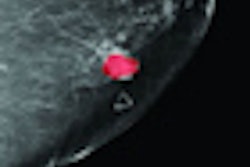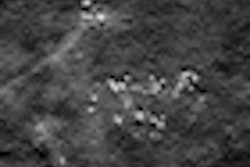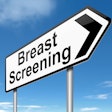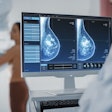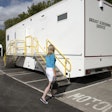Researchers are testing the ability of a Web-based program to reduce recall rates of radiologists who perform mammography screening. While results are still pending, if successful, this type of program shows potential to reduce screening-related costs and improve radiologists' performance.
In articles in the March and April issues of Academic Radiology, researchers describe an individually tailored, Web-based audit and training intervention with radiologists who have high mammography recall rates. Although this intervention involved fewer than 50 radiologists, it demonstrates a method by which Internet-accessible information can be used to positively influence physician behavior and improve their clinical performance (Acad Radiol, March 2011, Vol. 18:3, pp. 369-376; April 2011, Vol. 18:4, pp. 495-503).
A team led by principal investigator Patricia Carney, PhD, a professor of family medicine at the Oregon Health and Science University, heads the still-ongoing project, designed to help reduce radiologist recalls.
The value of Internet-based training compared with paper-based or in-person instruction is the ability to individualize content to make it more relevant to the targeted recipient. Database mining using specific criteria can identify radiologists for whom the training is designed. The researchers targeted radiologists whose mammography recall rates were at least 13%, or four percentage points higher than the target rate of 9% in the U.S.
Carney and colleagues used four regional mammography registries to identify radiologists who actively interpreted mammograms between January 2006 and September 2007. The National Cancer Institute (NCI)-funded registries included the Carolina Mammography Registry, the Group Health Research Institute's Breast Cancer Surveillance project in Seattle, the New Hampshire Mammography Network, and the Vermont Breast Cancer Surveillance System. A total of 196 radiologists were identified as having recall rates of 13% or higher.
The radiologists were mailed a survey that included questions about their age, years in practice, percentage of time dedicated to breast imaging, and estimated annual volume of mammograms. They were also invited to participate in the intervention and receive continuing medical education (CME) credit upon completion of the program.
The researchers received a response rate of 66%. The 129 respondents were predominantly male (63%), were not affiliated with an academic medical center (76%), and had not undertaken a breast imaging fellowship (87%). Of the 118 who reported their mammography reading experience, 38% had been interpreting mammograms for 20 years or more, 42% between 10 and 19 years, and 20% for less than 10 years. Of the 112 radiologists who reported the amount of time they spent reading breast exams, 25% of them spent more than 80% of their time, 15% spent between 40% and 79%, 37% between 20% and 39%, and 23% less than one-fifth of their time.
Only 38% of the total group accepted the invitation to participate in the recall-reduction program. This included some radiologists who did not complete the survey. However, only 46 of the 74 radiologists actually started the hour-long program, and five radiologists failed to complete it. The analysis is based on the reactions of 41 radiologists.
The intervention
The intervention consisted of three modules based on common misperceptions identified in an earlier research study. Module topics included an introduction to audit statistics for mammography performance, a review of data on breast cancer risk among women seen in an individual radiologist's practice, and a review of data showing radiologists' inflated perceptions of medical malpractice risks related to breast imaging. When a participating radiologist logged into the program, the system transparently combined individualized registry data with a modular template containing instructional content.
More than 90% of the radiologists reported that the integration of their own data was helpful, and more than 80% equally valued the breast cancer risk statistics, which were based on the research team's calculations of the risk of developing breast cancer in the next 12 months in patients in the individual radiologists' screening population. The researchers felt that this was more relevant to the radiologists than a five-year risk estimate.
The module about malpractice risk and statistics relating to it also had a positive impact. The percentage of radiologists who assumed that higher recall rates would reduce malpractice risk, an incorrect assumption, dropped by almost half, from 36.3% to 17.8%.
The participants were encouraged to set new recall rate goals. The overwhelming majority stated that they would change their recall rates, and the majority of selected goals involved rereviewing cases in which they felt that the likelihood of cancer being present was very low. Others reported that they would change interpretive thresholds and/or practices, or would seek a second opinion from a colleague.
What's next
The objective of the study was to encourage radiologists to change their performance and reduce their percentage of recalls. The intervention program identified the metrics in clinical performance that could be improved, identified factors that could influence performance, and offered suggestions for change.
How well did it work? The research team doesn't know yet but intends to publish the results. Whether the outcomes are representative of the potential this intervention program could have with radiologists at large will not be known due to the small sample size.
The authors acknowledge that finding a way to get radiologists who could benefit from targeted training to participate in a program remains a challenge. They recommend that more research be done to learn how best to engage radiologists to participate in Web-based educational programs.






